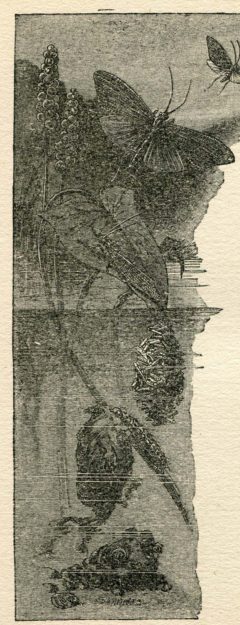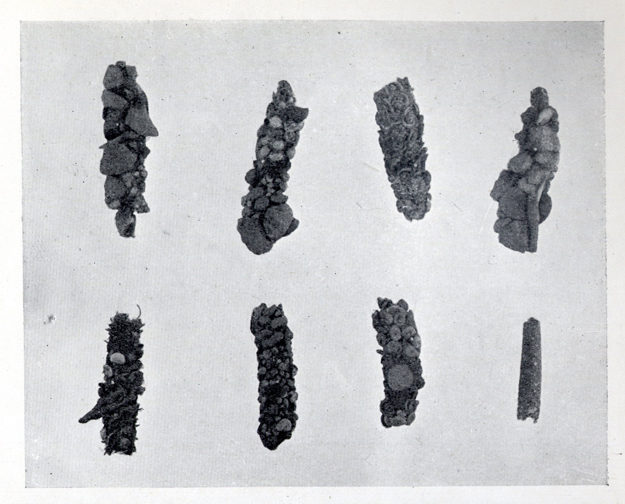Reverend Charles A. Hall, Pond Life, Londres, A. & C. Black, (1913), 1920, p. 70-71.

But the Caddis-worm, or Caddis-larva, provides us with greater interest thant the perfect insect. To quote from the old naturalist, Réaumur ; « The body of theses larvae is lodgeg in a silken tube, to the outside of which are fastened fragments of differents substances, selected for the purpose of strengthening and defending it. The sheaths may be quite irregular, rough and prickly, or smooth and symmetrical. When the old sheath becomes too narrow or too short, the larva makes a fresh one. ….They clothe their tubes with very different materials. They make use of whole or nearly whole leaves, bits of leaves, or little sticks or straws. Others use seeds, rots, grains of sand and gravel, or the shells of water-snails and bivalves ; in short, all the materials which can be found in water are employed by particular Caddis-worms. » It should be added that it is more common for a larva to add to the wider end of its case and elarge it than discard it in favour of a new one ; the end which has become too small is cut off affter the enlargement has been effected. That the Caddis-larva makes and occupies such a tube in order to protect itself is obvious, and it sticks to its home with great tenacity.
